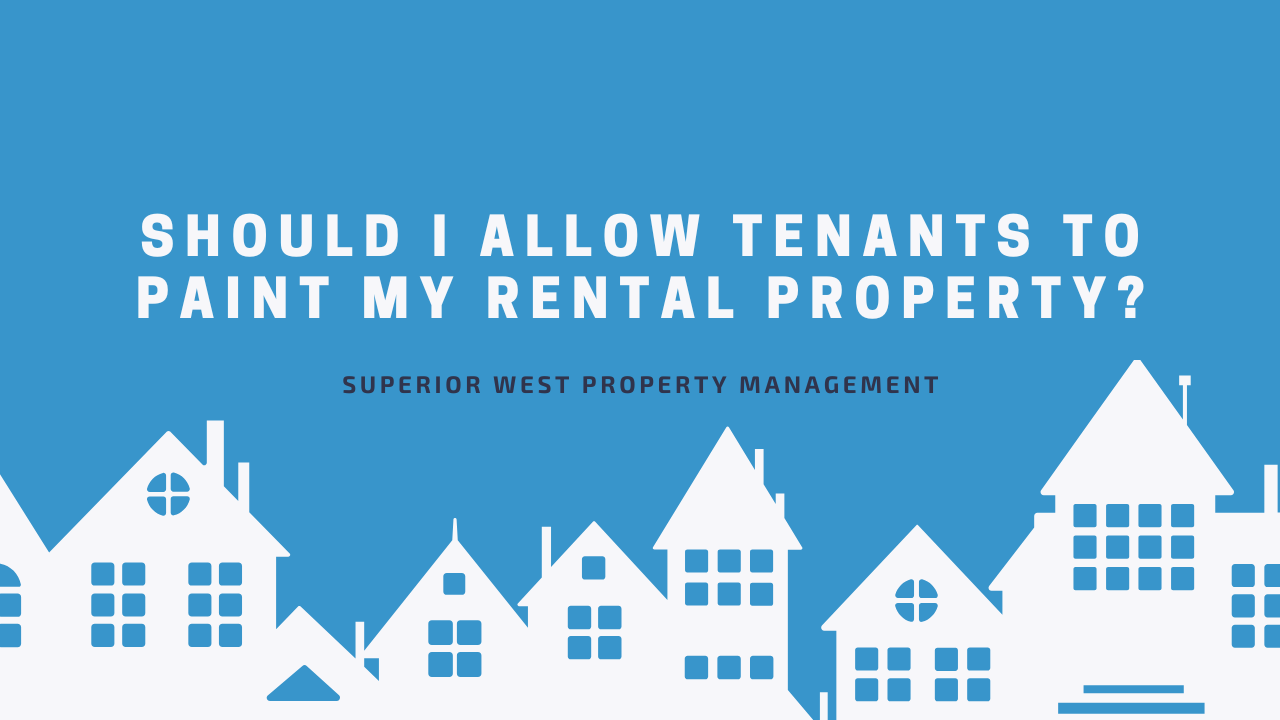Should I Allow Tenants to Paint My Rental Property?
Whether or not to allow a tenant to paint their rented space is a question a lot of landlords grapple with. While allowing tenants to personalize their space can create a sense of home and potentially lead to long-term residency, it also raises concerns about property upkeep and future maintenance.
The decision to permit painting is not merely about aesthetics; it involves weighing the benefits of tenant satisfaction against the risks of potential damage and the financial implications that could arise. In this article, we’ll explore the pros and cons of allowing tenants to paint your rental property, helping you navigate this important decision with confidence and insight.
Allowing Tenants to Paint
Pros
Increased Tenant Satisfaction
Allowing tenants to personalize their rental space through painting can significantly enhance their sense of comfort and belonging. When tenants can express their individuality, they are more likely to feel at home, fostering a positive living experience. This increased satisfaction can lead to longer tenancies and reduced turnover rates.
Happy tenants are often more cooperative, treat the property with care, and are less likely to partake in conflicts or disputes. In essence, when tenants feel that their preferences matter, it cultivates goodwill and strengthens the landlord-tenant relationship.
Potential for Better Property Maintenance
When tenants invest their time and effort into personalizing their space, they may develop a stronger sense of responsibility towards the property. This sense of ownership often translates into better care for the property, as tenants who have taken the initiative to paint are generally more likely to notice maintenance issues and report them promptly.
This proactive approach can lead to early detection of problems, minimizing costly repairs down the line. Moreover, satisfied tenants are often more inclined to renew their leases, providing landlords with consistent rental income and reduced vacancy rates.
Enhanced Aesthetic Appeal
A fresh coat of paint can dramatically improve the overall look of a rental property. By allowing tenants to choose colors and styles that resonate with them, landlords can benefit from a more vibrant and inviting atmosphere.
This visual enhancement can be a compelling selling point when advertising the property to future tenants, making it more attractive and increasing its marketability. Additionally, well-maintained and visually appealing properties can command higher rental rates, contributing to improved profitability.
Cons
Risk of Damage
One of the primary concerns with allowing tenants to paint is the potential for damage. Not all tenants possess the necessary skills or experience to paint professionally. This lack of expertise can result in uneven finishes, splatters on trim or floors, and even damage to walls and fixtures.
Such issues can lead to additional costs for the landlord when it comes time to return the property to its original condition.
Inconsistent Color Choices
While personalized colors can enhance tenant satisfaction, they may also create aesthetic challenges for the landlord. Each tenant’s choice of color may differ significantly, leading to a patchwork effect across multiple units, especially in multi-unit buildings. This inconsistency can detract from the overall appeal of the property and make it less attractive to prospective tenants who may prefer a more neutral or cohesive design.
Additionally, if a tenant decides to paint in bold or unconventional colors, future tenants might find the decor unappealing, making it harder to re-rent the property. As a result, landlords may face increased costs associated with repainting and restoring a more marketable look once the tenant vacates.
Not Allowing Tenants to Paint
Pros
Consistency in Appearance
Maintaining a uniform look across rental units is one of the key advantages of not allowing tenants to paint. A consistent aesthetic helps create a cohesive environment, which can be especially important in multi-unit properties. This uniformity not only contributes to a professional appearance but can also enhance the property’s overall value.
Potential tenants may appreciate the polished, well-maintained look, which reflects positively on the landlord’s management. Consistency in color schemes can also simplify future marketing efforts, as you can present a cohesive image that appeals to a broader audience.
Reduced Risk of Damage
By prohibiting tenants from painting, landlords significantly minimize the potential for property damage that could arise from amateur painting jobs. Even with the best intentions, tenants may inadvertently cause issues such as paint spills, wall scratches, or improper use of materials, leading to costly repairs.
When landlords control the condition of the property, they can ensure that the paint is applied correctly and that high-quality materials are used. This proactive approach can result in lower maintenance costs and less frequent turnover in repair needs, ultimately protecting the landlord’s investment.
Cons
Potential for Tenant Discontent
Not allowing tenants to personalize their living space can lead to frustration and dissatisfaction. Tenants often seek a sense of home in their rental properties, and restrictions on painting can make them feel less invested in their living environment.
This discontent may prompt tenants to seek alternative housing options that allow for more customization, leading to higher tenant turnover rates. Frequent tenant turnover can be a costly burden for landlords, as it entails additional marketing efforts, cleaning, and potential periods of vacancy while new tenants are found.
Longer Vacancy Periods
Properties that lack personalization and a welcoming atmosphere may struggle to attract new tenants quickly. Prospective renters often want a space that feels homey and reflects their personal style, so a lack of visual appeal can deter them from signing a lease.
When properties remain vacant for extended periods, landlords face not only lost rental income but also additional costs related to maintaining the property during the vacancy. This situation can ultimately affect the property’s profitability, making it crucial for landlords to find a balance between maintaining control over their property and meeting tenant desires for personalization.
Finding Your Balance
Deciding whether to allow tenants to paint your rental property hinges on balancing tenant satisfaction and property integrity. At Superior West Property Management, we understand the unique needs of landlords and can help you navigate this decision. Our experienced team can provide tailored solutions that align with your property goals. Reach out to us today to discuss your options and determine the best approach for your rental property.












